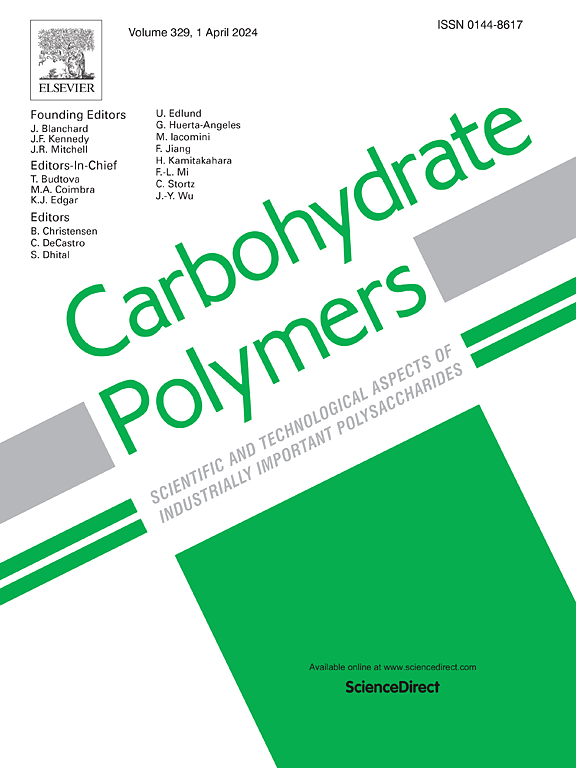An adhesive, antibacterial, conductive zwitterionic cellulose nanofibers-containing hydrogel for flexible strain sensors and super-capacitors
IF 10.7
1区 化学
Q1 CHEMISTRY, APPLIED
引用次数: 0
Abstract
Cellulose-based hydrogels are promising materials for constructing flexible supercapacitors and energy storage devices due to their environmental sustainability and resource renewability. However, preparing cellulose-based hydrogel electrolytes with super flexibility, high conductivity, and high specific capacitance for practical applications is still challenging. Herein, an adhesive, antibacterial, conductive zwitterionic cellulose nanofibers-reinforced poly(sulfobetaine methacrylate-acrylic acid-acrylamide (ZCNF/PSAA) composite hydrogel was fabricated by a blue light-triggered free radical polymerization of 2-methacryloyloxy ethyl dimethyl-3-sulfopropyl ammonium hydroxide (SBMA), acrylic acid (AA), acryl amide (AM), dopamine methacrylamide (DMA) and zwitterionic cellulose nanofibers (ZCNF). The prepared hydrogel exhibited excellent mechanical properties with tensile strength of 0.17 MPa, compressive strength of 0.87 MPa, and shear strength of 1.25 MPa, respectively. The zwitterionic groups significantly enhanced the hydrogel's conductivity (5.8 S/m). Moreover, the hydrogel with electrically sensitive perception of external strain (GF = 2.5), can withstand large bending and compression deformations and can be used as a motion sensor to monitor human movements such as arm and finger bending, pressing, and subtle fist clenching. The resulting hydrogel presented excellent antibacterial activity against Escherichia coli and Staphylococcus aureus. As the hydrogel was applied as electrolyte, the developed super-capacitor exhibited a desirable specific capacitance of 404.5 mF·cm−2, with a maximum energy density of 53.93 Wh·kg−1 and capacitance retention of 80.3 % after 2000 consecutive charge-discharge cycles. The ZCNF/PSAA hydrogel has great potential for applications in flexible strain sensors and energy storage devices.

求助全文
约1分钟内获得全文
求助全文
来源期刊

Carbohydrate Polymers
化学-高分子科学
CiteScore
22.40
自引率
8.00%
发文量
1286
审稿时长
47 days
期刊介绍:
Carbohydrate Polymers stands as a prominent journal in the glycoscience field, dedicated to exploring and harnessing the potential of polysaccharides with applications spanning bioenergy, bioplastics, biomaterials, biorefining, chemistry, drug delivery, food, health, nanotechnology, packaging, paper, pharmaceuticals, medicine, oil recovery, textiles, tissue engineering, wood, and various aspects of glycoscience.
The journal emphasizes the central role of well-characterized carbohydrate polymers, highlighting their significance as the primary focus rather than a peripheral topic. Each paper must prominently feature at least one named carbohydrate polymer, evident in both citation and title, with a commitment to innovative research that advances scientific knowledge.
 求助内容:
求助内容: 应助结果提醒方式:
应助结果提醒方式:


